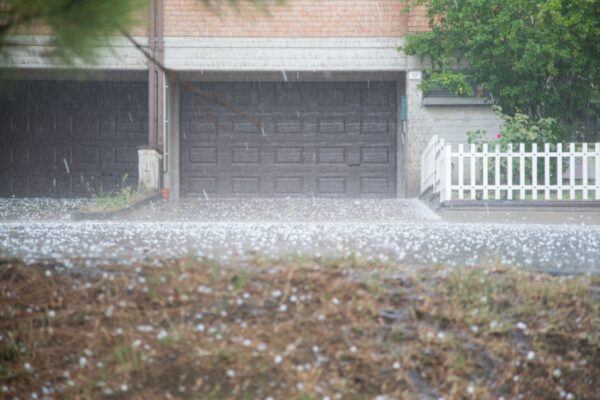Most school districts and individual schools have emergency management plans in place. However, they are not always practiced regularly, coordinated with community resources, updated regularly or based on factual data and circumstances.
As a result, when schools and districts find themselves in situations that merit an emergency response, they are often left unprepared.
Having a solid emergency response plan in place is essential, as emergencies of all shapes and sizes occur in schools on a daily basis, and these incidents can have lasting physical, emotional and educational ramifications.
According to the U.S. Department of Education Office of Safe and Drug-Free Schools, there are several phases involved in planning an effective emergency management program.
Phase 1: Mitigation and Prevention
Mitigation is the actions schools and districts can take to eliminate or reduce the loss of life and property damage related to an event that cannot be prevented. On the other hand, prevention is the actions schools and districts can take to decrease the likelihood that an event or crisis will occur.
Some examples of mitigation include taking the following steps:
- Bolting bookshelves to the wall
- Fencing off hazardous areas
Some examples of prevention include taking the following steps:
- Forming policies related to food preparation, mail handling and building access
- Making assessments related to threats, physical infrastructure, and culture and climate of the school
- Current school efforts such as anti-bullying policies and wellness activities
To put this phase into action, school officials should be encouraged to take the following steps:
- Know the school building thoroughly and the community at large.
- Become acquainted with local first responders, community partners and the state emergency management agency.
- Bring together regional, local and school leaders.
- Make regular school safety and security efforts part of larger mitigation and prevention efforts.
- Establish clear lines of communication.
- Conduct safety and security need assessments.
- Incorporate lessons learned from previous emergencies and drills to update emergency plans.
Phase 2: Preparedness
The preparedness phase is designed to get the school community ready for potential emergencies by coordinating efforts with community partners. This involves developing protocols and policies, creating incident command systems and conducting formal training and exercises:
- Identify and involve stakeholders in the planning process.
- Determine what crises the plan will address.
- Define roles and responsibilities.
- Develop methods for communicating with staff, students, families and the media.
- Obtain necessary equipment and supplies.
- Prepare for immediate responses.
- Create maps and facility information.
- Develop accountability and student release procedures.
- Predetermine policies for locating staff and teachers following an emergency.
- Establish systems off-site for storing registration information and for conducting payroll services.
- Practice your program with all those affected by a potential emergency.
- Address liability issues.
Phase 3: Response
The response phase encompasses taking action to effectively contain and resolve an emergency through the implementation of the school’s or district’s emergency management plan:
- Expect the unexpected.
- Assess the situation and choose the appropriate response.
- Notify appropriate emergency personnel and the school crisis response team.
- Evacuate or lock down the premises, as appropriate.
- Triage injuries and provide emergency first aid to those who need it.
- Keep supplies nearby and organized at all times.
- Identify primary and alternative evacuation sites in case the primary sites are not available during an emergency.
- Move district resources (buses, etc.) out of the disaster area.
- Trust leadership to know how to handle the situation.
- Communicate accurate and appropriate information.
- Activate the student release system.
- If it is a large-scale disaster and the buildings were evacuated for an extended period of time, establish a system for distributing or disposing of food stored in school facilities,
- Allow for flexibility in implementing the emergency management plan.
- Document the process and how successful the emergency management plan was.
Phase 4: Recovery
The recovery phase is designed to assist students, staff and their families in the healing process and to restore the educational operations of the school. This includes repairing the physical/structural aspects of the school, attending to business or fiscal needs, getting back to academics and healing psychological or emotional wounds.
Planning for recovery involves establishing community partnerships, developing policies, providing training and developing memorandums of understanding:
- Assemble a crisis intervention team.
- Return to the “business of learning” as quickly as possible.
- Keep students, families and the media well-informed.
- Provide assessments of the emotional needs of the staff, students, families and responders.
- Provide stress management after class resumes.
- Conduct daily debriefings with staff, responders and others assisting in the recovery efforts.
- Take as much time as needed for the recovery.
- Pre-negotiate contracts for transportation, food, construction and other district needs.
- Implement a system to manage the receipt of any donations.
Goal of Emergency Response Systems
If an emergency response system is created and executed correctly, it should hopefully achieve the following objectives:
- Address all four phases of emergency management, as listed above.
- Take an “all hazards” approach. This means that the plan addresses the following perils:
- Natural disasters–earthquakes, tornadoes, floods and other natural disasters.
- Technological, such as power outages
- Infrastructure, such as roads, bridges and utilities
- Nonstructural, such as portable room dividers, bookshelves, suspended ceilings and light fixtures
- Man-made, such as hazardous materials release or acts of terrorism
- Biological, such as flu pandemic or contaminated food
- Physical well-being, such as broken bones from playing too rough or student suicide
- Student culture and climate, such as bullying, drugs or violent behavior on the premises
By engaging the local government, law enforcement, the students and their families and the school district in these emergency response efforts, you are taking the appropriate measures to make your school and district a safer place to learn and work.
This Risk Insights is not intended to be exhaustive nor should any discussion or opinions be construed as legal advice. Readers should contact legal counsel or an insurance professional for appropriate advice. © 2009-2010 Zywave, Inc. All rights reserved.
Material posted on this website is for informational purposes only and does not constitute a legal opinion or medical advice. Contact your legal representative or medical professional for information specific to your legal or medical needs.


